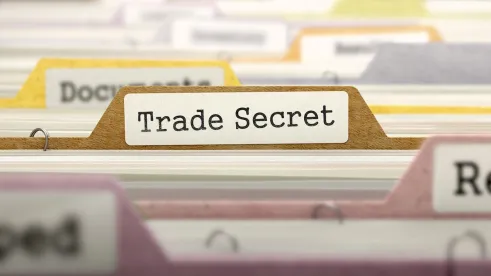While preliminary injunctions are not uncommon in trade secrets misappropriation cases, a recent Fifth Circuit decision highlighted the importance that the movant put forth colorable evidence of misappropriator “use” of the trade secrets in preliminary injunction cases. In CAE INTEGRATED, L.L.C.; Capital Asset Exchange and Trading, L.L.C. v. MOOV TECHNOLOGIES, INCORPORATED; Nicholas Meissner — F.5th — (2022) 2022 WL 3210358 , the Fifth Circuit affirmed denial of a preliminary injunction for the lack of evidence showing such use. In this case, CAE sued Meissner, a former employee, and MOOV, his subsequent employer, for trade secret misappropriation in the Western District of Texas under the Defend Trade Secrets Act (DTSA) and the Texas Uniform Trade Secrets Act (TUTSA). CAE also moved for a preliminary injunction, which was denied. CAE appealed that denial in the Fifth Circuit.
While with CAE, Meissner used his personal MacBook, which was synced with Google Drive. When CAE later issued Meissner a company laptop, Meissner let CAE take a snapshot of his personal MacBook and wipe its hard drive. Meissner later gave the MacBook to CAE for repair; CAE never returned it. After being terminated by CAE, Meissner discovered CAE had only moved his work files to the trash bin rather than permanently deleting them, and restored them to his Google Drive.
After waiting out a one-year non-compete, Meissner joined Moov as Head of Sales. But before joining Moov, he deleted any documents he thought could contain CAE data. He also verified to Moov that he had not retained and would not use any CAE data.
Meissner’s rapid success at Moov prompted CAE’s CEO to announce CAE was “going to war” with Moov. As a result, CAE conducted a forensic exam on the snapshot of Meissner’s MacBook. CAE found a folder synced to Google Drive with thousands of documents from Meissner’s time at CAE. But further forensic analysis also showed that Meissner had not synchronized his Google Drive since he started at Moov, and showed no access to the Google Drive by Meissner or Moov. Meissner had deleted all CAE information from his active Google Drive and thus did not have the data that appeared in the snapshot. And months before the preliminary injunction hearing, Meissner gave up access to his Google Drive entirely. These facts proved fatal to CAE’s preliminary injunction application.
CAE further alleged that Meissner and Moov misappropriated transactional documents and customer lists. But on review of the facts, the Court found the district court did not err in finding that CAE failed to show that Meissner and Moov had access to trade secrets in the transactional documents. As for the customer lists, CAE contends that Moov’s knowledge of some CAE customers shows that Moov misappropriated trade secrets. The Court found that this knowledge, absent other evidence, insufficient to support a finding that he misappropriated trade secrets.
The Court also found that, even if CAE had established that Meissner or Moov misappropriated trade secrets, it failed to show the use or potential use of trade secrets. CAE contended that such use can be inferred from Moov’s success. The court found this inference, standing alone, insufficient to show that Moov used CAE’s trade secrets.
As for the preliminary injunction, the Court quoted SEC v. Blatt, 583 F.2d 1325, 1334 (5th Cir. 1978): “The critical question in issuing the injunction and also the ultimate test on review is whether defendant’s past conduct indicates that there is a reasonable likelihood of further violations in the future.” As there was no continued access to the MacBook or Google Drive, the Court held there was no threatened future use of trade secrets. And as CAE could not show a likelihood of success on its trade secrets claim the Court affirmed the district court’s denial of the preliminary injunction.
CAE serves as an important reminder that preliminary injunctions require more than inference; they require evidence supporting the required elements of a trade secrets claim.



 />i
/>i

